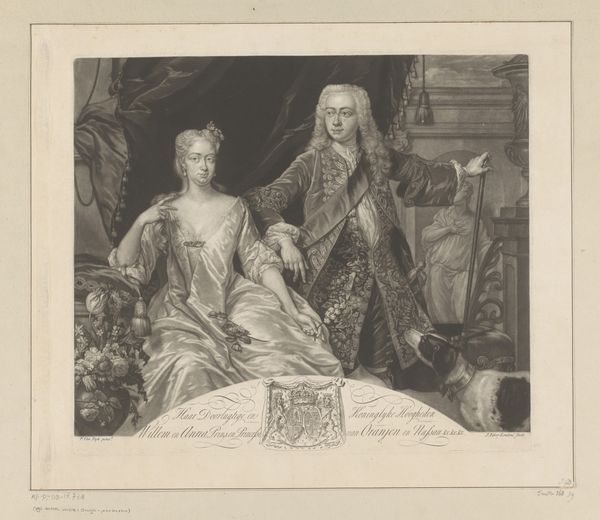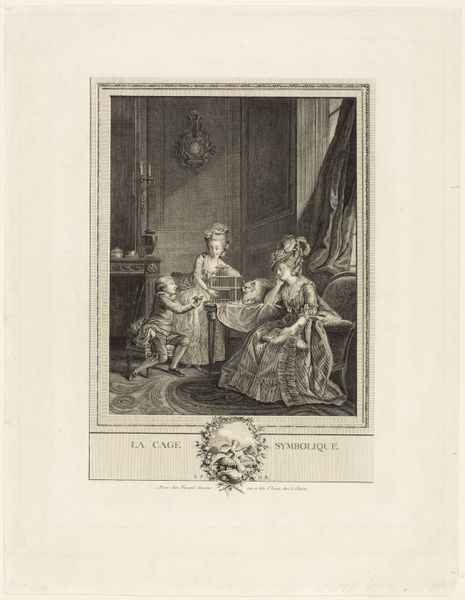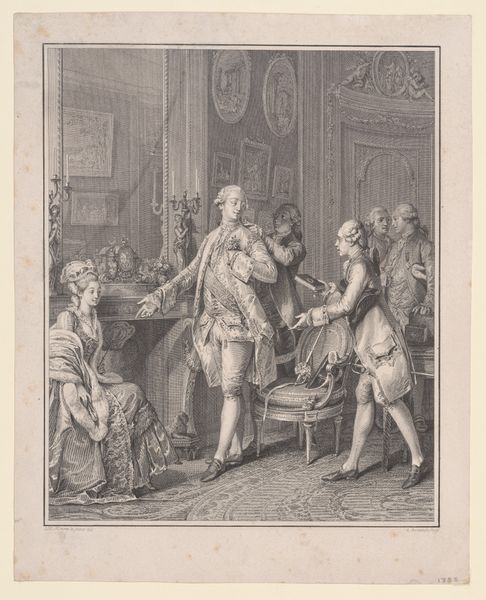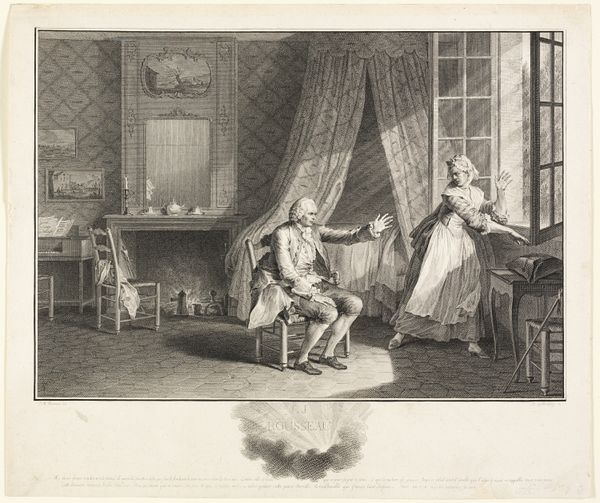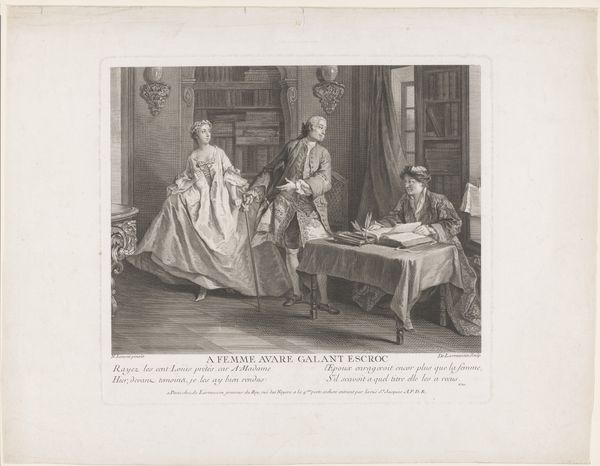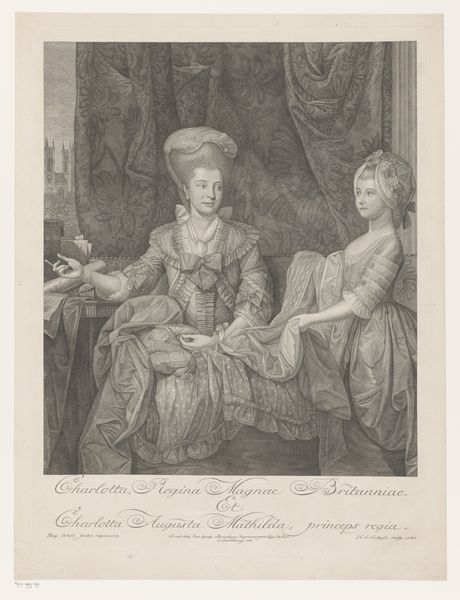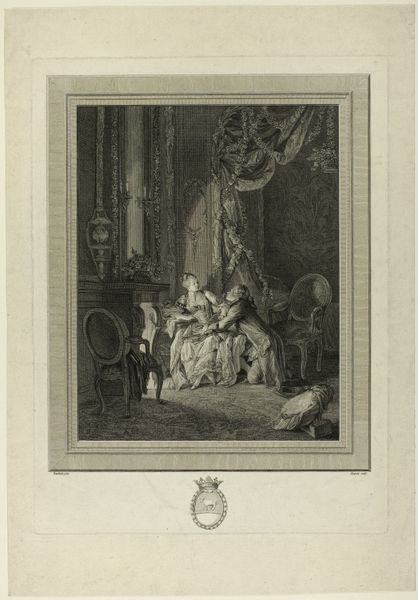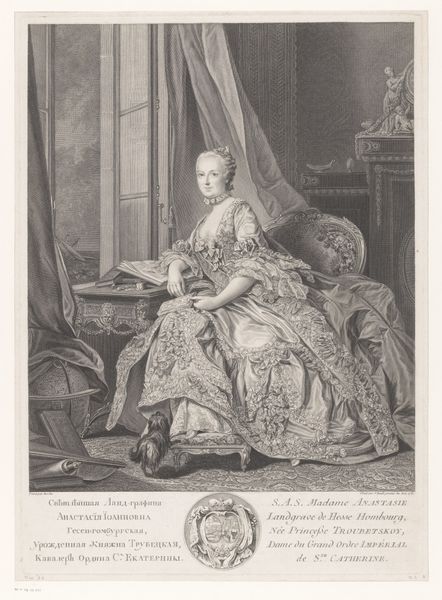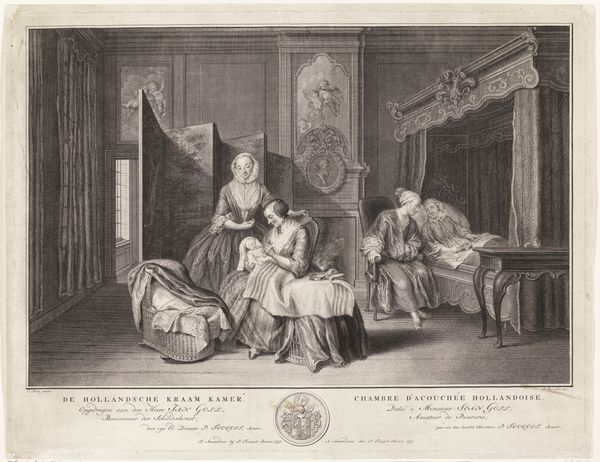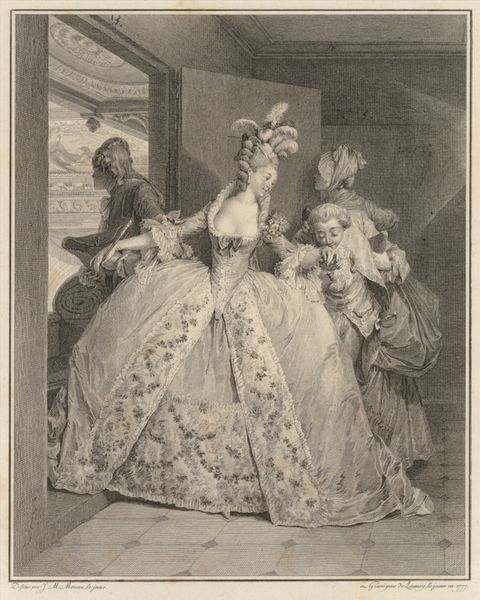
Portret van Charlotte van Mecklenburg-Strelitz en haar dochter Charlotte 1778
0:00
0:00
Dimensions: height 505 mm, width 578 mm
Copyright: Rijks Museum: Open Domain
Curator: Valentine Green created this print back in 1778, an engraving titled "Portret van Charlotte van Mecklenburg-Strelitz en haar dochter Charlotte." Editor: Well, isn't that striking! It’s very formal, of course. All lace and gravity, yet that soft grayscale has a hauntingly ethereal effect. There’s something subtly performative in the stiffness of the women’s pose, I think. Curator: It absolutely speaks to the rigid structures around royal portraiture! Here, the Queen of Great Britain and her daughter are composed alongside symbolic nods to their status. Note the sculpted bust on the left; there's almost an element of classical allegory woven into the composition. The city looming in the background on the left—Westminster, of course. Editor: It's as much about what they represent, isn't it, as who they are. But what does it tell us about the female experience, beyond monarchy? Curator: These women are draped in textiles, literally and metaphorically. It's an exquisite study in confinement, you might say, where the Rococo style seems to further ornate, even entrap them. Consider the intricate details of their gowns: expressions of luxury, status symbols... yet are they also emblems of imposed restriction? The relationship feels as though it's equally bound by the strictures of decorum. The young princess appears to present her mother almost—a sign of her duty. Editor: Yes, absolutely! One wonders what it felt like to sit there, holding that pose, those garments, the expectations, so publicly, as a constant visibility of wealth and power. And also—think about how images like these function discursively to disseminate ideals about beauty, kinship, lineage, and imperial power. These ideals are of course inflected through a lens of gender, race, and class. What did it mean for those unable to access those forms of representation to engage with them? How did they resist, subvert, or adapt them to articulate their own truths? Curator: Right! By rendering the image in grayscale engraving, it invites the viewer to examine every detail—the social implications become stark, wouldn’t you agree? It prompts an active analysis, not passive observation, of the very codes that define them. Editor: Indeed. It goes beyond a simple image and provides a lens to view history and society from multiple intersecting perspectives. Curator: Precisely. There is so much to look at beneath all the lace!
Comments
No comments
Be the first to comment and join the conversation on the ultimate creative platform.
